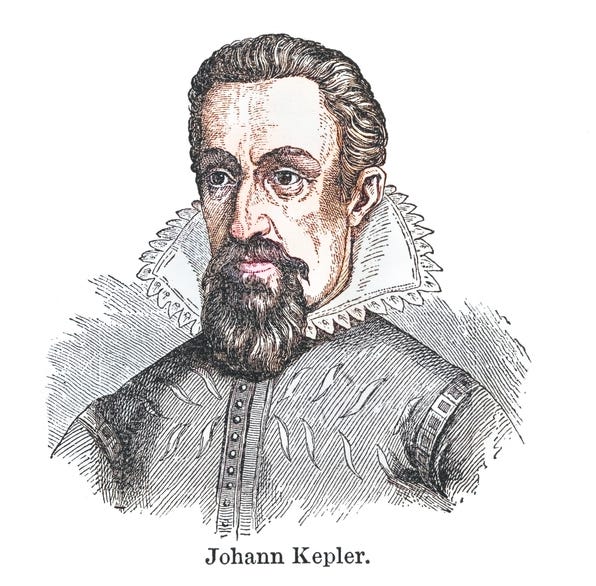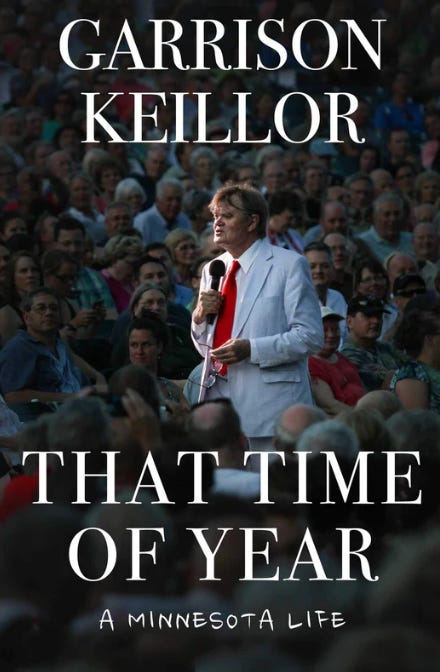“Weather” by Faith Shearin from Orpheus, Turning. © The Broadkill River Press, 2015.
ORIGINAL TEXT AND AUDIO - 2017
The German astronomer Johannes Kepler discovered the third law of planetary motion on this date in 1618. Before Kepler, Copernicus had come up with three basic theories: one, that planets have a circular orbit; two, that the sun is the center of the orbit; and three, that a planet’s speed is constant. Kepler’s three laws fine-tuned the theories of Copernicus.
By 1609, Kepler had come up with two laws based on his study of the work of 16th-century Danish astronomer Tycho Brahe. The first is sometimes known as the Law of Ellipses; it states that planets follow an elliptical path around the sun — not circular, as Copernicus had thought. And the sun is not in the center of the ellipse, but at a focal point.
Kepler’s second law is the Law of Equal Areas. Unlike Copernicus’s theory, he determined that the speed at which a planet moves through space is not constant: a planet moves faster when it’s nearer the sun, and it slows down when it’s in the farthest reaches of its orbit, due to the effect of the sun’s gravitational pull. But Kepler figured out that if he drew an imaginary line from the center of a planet to the center of the sun, it would sweep across equivalent total areas in equivalent periods of time.
Kepler’s third law, which he discovered on this date, is known as the Law of Harmonies. While his first and second laws describe the motion of individual planets, the Law of Harmonies compares the motion of different planets. Kepler discovered that the square of a planet’s orbital period is directly proportional to the cube of its average distance from the sun, and the ratio is almost exactly the same for every planet in our solar system.
Today is the birthday of novelist Jeffrey Eugenides born in Detroit, Michigan (1960), who won the Pulitzer Prize for his book Middlesex (2002), which is about the life of an intersex person.
He began writing seriously after spending a year volunteering with Mother Teresa in Calcutta, India. At one time, he thought he might become a Trappist monk, but the life didn’t suit him. He said, “I was scared and lacked charity.” He’d been enamored of Marcel Proust and Virginia Woolf and decided to be a writer because “it seemed to promise maximum alertness to life. It seemed holy to me, and religious.”
His first novel, The Virgin Suicides (1993), is about the lives of the teenaged Lisbon sisters, who all commit suicide. Eugenides says he was inspired by a conversation he had with his nephew’s babysitter, who confessed she and her sisters had all contemplated suicide. The book sold slowly at first, and then became a best-seller and later a film starring Kirsten Dunst, directed by Sofia Coppola. The Virgin Suicides is now one of the most shoplifted books in the world. He’s also written the novel The Marriage Plot (2011).
It’s the birthday of literary critic Leslie A. Fiedler, born in Newark, New Jersey (1917). Fiedler shot to fame in 1948 at the age of 31 with his essay “Come Back to the Raft Ag’in, Huck Honey,” which caused an uproar for its frank discussion of race, gender, and sexuality in American literature, using The Adventures of Huckleberry Finn as an example. Fiedler became well known for his challenging essays, most of them collected in his book Love and Death in the American Novel (1960). He’s credited with coining the phrase “postmodernist literature.”
He said, “I long for the raised voice, the howl of rage or love.”
On this day in 1855, a train passed over the first railway suspension bridge at Niagara Falls, New York. The bridge spanned 825 feet, connecting Niagara Falls, Ontario, with Niagara Falls, New York. Trains used the upper deck; pedestrians and carriages used the lower deck. The bridge transformed the region economically: trade and tourists began to pour into the area.
Before the bridge, people crossed the river by boat, mostly the tourist vessel Maid of the Mist, which traveled right up to the falls, giving its passengers an eyeful of natural beauty. Most people scoffed at the idea of a bridge, especially one that could support a train. An engineer named Charles Ellet Jr., a rather dramatic personage with a flair for showmanship, developed some interesting ideas for attaching a line across the tremendous gorge that involved firing cannonballs and rockets.
He settled for a contest: he offered $5.00 to any boy who could fly a kite across the gap from the Canadian and tie the kite string on the American side. Streams of young boys attempted the feat, one boy accomplished it after a few days, and Ellet’s men tied a heavier line to the kite string and pulled a line across the gap, continuing to do so with heavier and heavier lines. In 1848, Ellet became the first person to cross the gorge by bridge when he went across in a basket. Later, he made the trip in his horse-buggy, standing like a gladiator. The bridge was 250 feet above the water.
By 1860, more than 45 trains traveled the bridge each day. The toll was 25 cents per person and 50 cents per horse carriage.
Be well, do good work, and keep in touch.®
RELEASE WEEK - March 7th That Time of Year: A Minnesota Life (slightly revised) Softcover






I have been interested in astronomy since I was a child and when I was a senior in high school taking advanced physics, I thought that I major to major in astronomy. None of the colleges I wanted to go to offered it as a major, so I chose chemistry instead.
I loved "Middlesex". It is very relevant today – any person who read it would have a more sympathetic understanding of trans people.
Both my father (2002, age 76) and my grandfather (1961, age 66) died on March 8. I didn't realize it until I started doing genealogy research about 10 years ago. (I guess it must be written on their gravestone, but I don't visit cemeteries.) I mentioned this to my husband yesterday and he said that it was also his father's (born in 1907) birthday. My husband's parents were only 5 years younger than two of my grandparents and his grandparents were older than most of my great-grandparents.
Thanks. Even though this is all retrospect, I had missed this when it aired. A relevant poem, 2 new authors to explore...